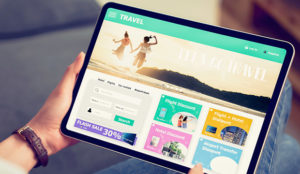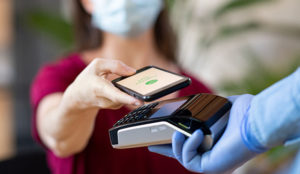
When Double Cola wanted to encourage its customers to keep coming back for more of its vintage fizzy drink, it started a rewards program. Using tried-and-true loyalty methods, the company offered customers the opportunity to turn over the cola’s caps, earn points, and get discounts and merchandise.
“These guys wanted to come into the current generation,” said Michael Levy, president of Online Rewards, the company that designed Double Cola’s rewards program.
“It’s been extremely successful. They developed a database, created a buzz, and fostered customer advocates,” he told the E-Commerce Times.
Loyalty is all about creating a positive experience with a brand so that customers will want to form and maintain a relationship with it, noted Levy.
“We create loyalty experiences,” he added. “The nature and form of meaningful loyalty has to speak to customer experience.”
Something for Something
Loyalty programs have become increasingly popular, partly in response to the fact that contemporary consumers need incentives to continue purchasing a particular brand.
“We won’t do much without a reward,” explained Levy. “It’s become part of our DNA. Our parents once did something for nothing, but our generation asks, ‘What are you asking me to do, and what do I get for doing it?'”
To be effective, a loyalty program must give those customers something that reflects the spirit of a brand. A cash reward alone doesn’t do the trick.
“You can give them money, but that doesn’t really speak to the company,” said Levy. “The company has to find a way to make the experience that it wants to create. The loyalty program must go beyond just cash back — it must create experiences.”
The more those experiences are woven into the daily lives of customers — through apps and push notifications, for instance — the more effective they will be.
“Location-based mobile apps enable businesses to reward loyalty in a very powerful way,” Sam Ganga, executive vice president for commercial operations with DMI, told the E-Commerce Times.
“Imagine receiving a digital coupon on your mobile device for a free pastry at your favorite coffee shop, just as you’re approaching,” he suggested. “Nothing beats mobile apps for their ability to reach an incredibly broad audience of customers and establish remarkably intimate connections with them. It’s a way to enable customers to put your business in their pocket — or hold your products and services in the palm of their hand.”
Because of that intimacy, marketing through mobile devices is key to building a sense of loyalty.
“When the customers are enabled to earn and redeem rewards via a mobile device they always carry with them, the engagement increases dramatically,” Roli Agrawal, CEO of ReZoop, told the E-Commerce Times.
ReZoop’s loyalty model relies not on apps but on QR codes that can be read with any mobile device.
“Being universal means customers do not have to download an app for every business they visit,” explained Agrawal.
“A ReZoop QR code is created for the registered business,” he continued. “This QR code can be printed off from our website. ReZoop encourages businesses to offer their customers a welcome reward when they join the business loyalty program. Businesses achieve an increased customer participation in our digital loyalty program in less than one month.”
The Economics of Loyalty
Keeping existing customers is much less expensive than acquiring new ones, making it cost-effective for businesses to develop and maintain relationships with the customers they already have.
“Acquisition costs are significantly greater than retention costs,” said Levy. “In order to get a new customer, one must communicate and let this new customer know you have something they might be interested in. You don’t have that cost when you have an existing customer, because they know what it is you’re selling, and they’ve bought it from you in the past. Acquisition costs can be three to 50 times the cost of retention costs.”
Loyal customers come with another benefit: They market a business to their friends and relatives, and that kind of word-of-mouth marketing is priceless.
“We want customer advocates, because they become marketing beacons for the organization,” said Levy.
Loyal customers, after all, are the ones who will post status updates about a brand on social media sites.
“Social media is the new name for old-world word-of-mouth advertising, and loyal customers are the only source of this free advertisement,” said Agrawal.
The best loyalty programs are long-lasting, giving time for the relationship between a brand and its customers to develop and deepen.
“A loyalty program is ongoing,” said Levy. “They don’t necessarily last forever, but this is about developing an ongoing relationship.”
























































Great post, Vivian – social media is absolutely key to customer loyalty. Not only is it the fastest and cheapest method for businesses, but it’s also the most convenient for consumers.